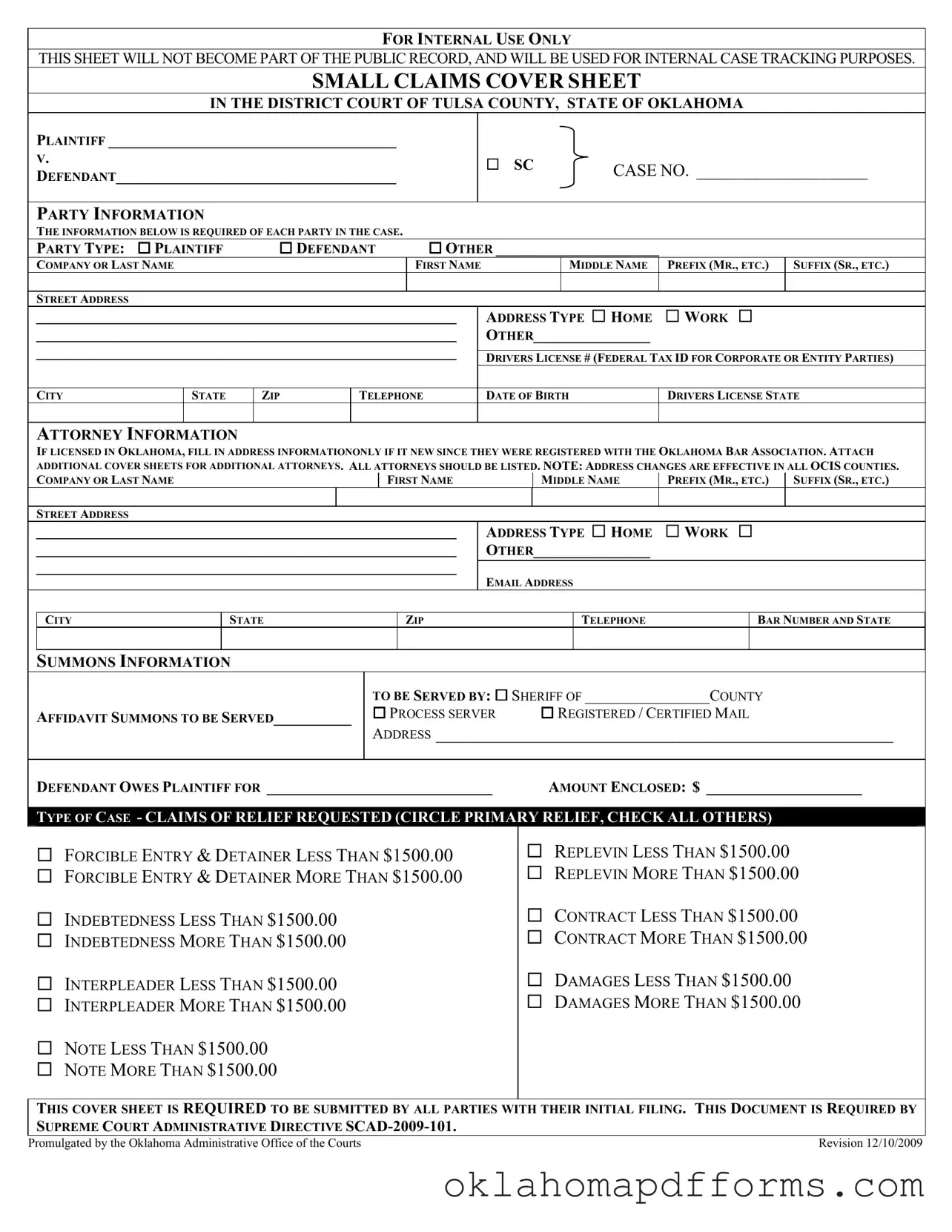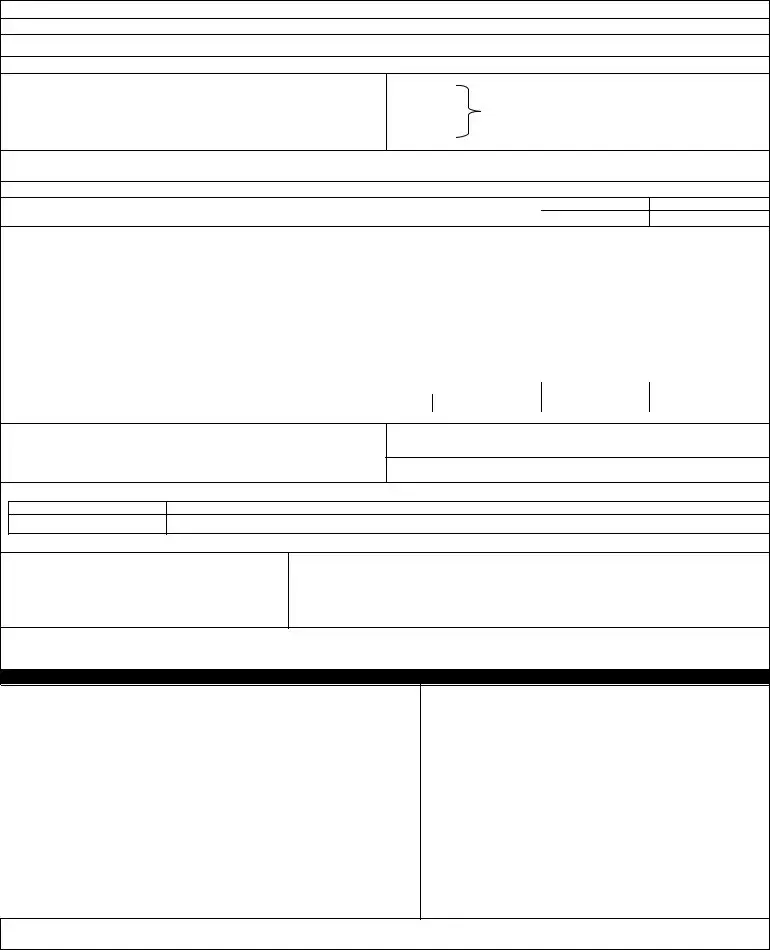What is the purpose of the Oklahoma Tulsa Small Claims form?
The Oklahoma Tulsa Small Claims form is used to initiate small claims cases in Tulsa County. It helps gather necessary information about the parties involved and the nature of the claims being made. This form is essential for processing your case in the district court.
Who needs to fill out the Small Claims form?
Both the plaintiff and the defendant must provide their information on the Small Claims form. This includes personal details such as names, addresses, and contact information. If there are multiple parties involved, additional cover sheets are required for each attorney representing the parties.
What information is required on the form?
The form requires basic information like the names and addresses of the plaintiff and defendant, their contact numbers, and the nature of the claim. You must also indicate the type of case and the amount of money being claimed. This helps the court understand the details of your case.
How do I submit the Small Claims form?
You can submit the Small Claims form in person at the district court in Tulsa County. It’s important to ensure that all required information is complete and accurate before submission. You may also need to pay a filing fee, so be prepared for that as well.
What types of claims can I file using this form?
The form allows you to file various types of claims, including forcible entry and detainer, indebtedness, interpleader, replevin, and contract disputes. The amount of the claim can be less than or more than $1,500, so make sure to circle or check the appropriate options on the form.
Is there a filing fee for the Small Claims form?
Yes, there is typically a filing fee associated with submitting the Small Claims form. The amount can vary, so it’s best to check with the Tulsa County district court for the current fee schedule. Be sure to include the correct amount when you submit your form.
What happens after I submit the Small Claims form?
Once you submit the Small Claims form, the court will process your case. A summons will be issued to notify the defendant of the claim against them. The court will provide instructions on how the defendant should respond, and a hearing date will be set.
Can I represent myself in a Small Claims case?
Yes, individuals can represent themselves in Small Claims court. However, it is advisable to understand the process and prepare your case thoroughly. If you feel uncertain, you may want to consult with an attorney for guidance.
What if I need to change my address after filing?
If you change your address after filing the Small Claims form, it is important to update the court. Address changes are effective in all OCIS counties, so make sure to notify the court to ensure you receive all necessary communications regarding your case.

